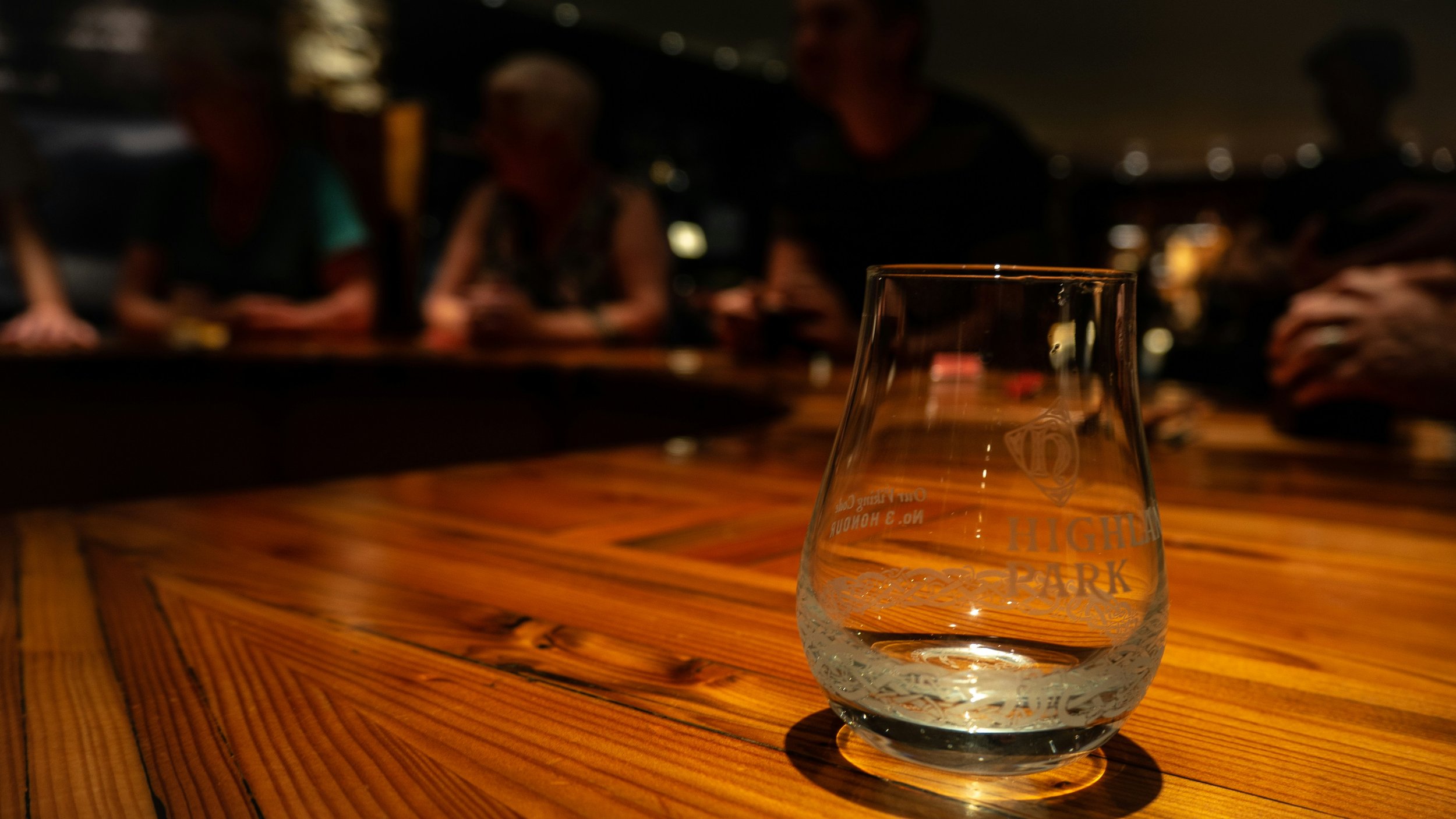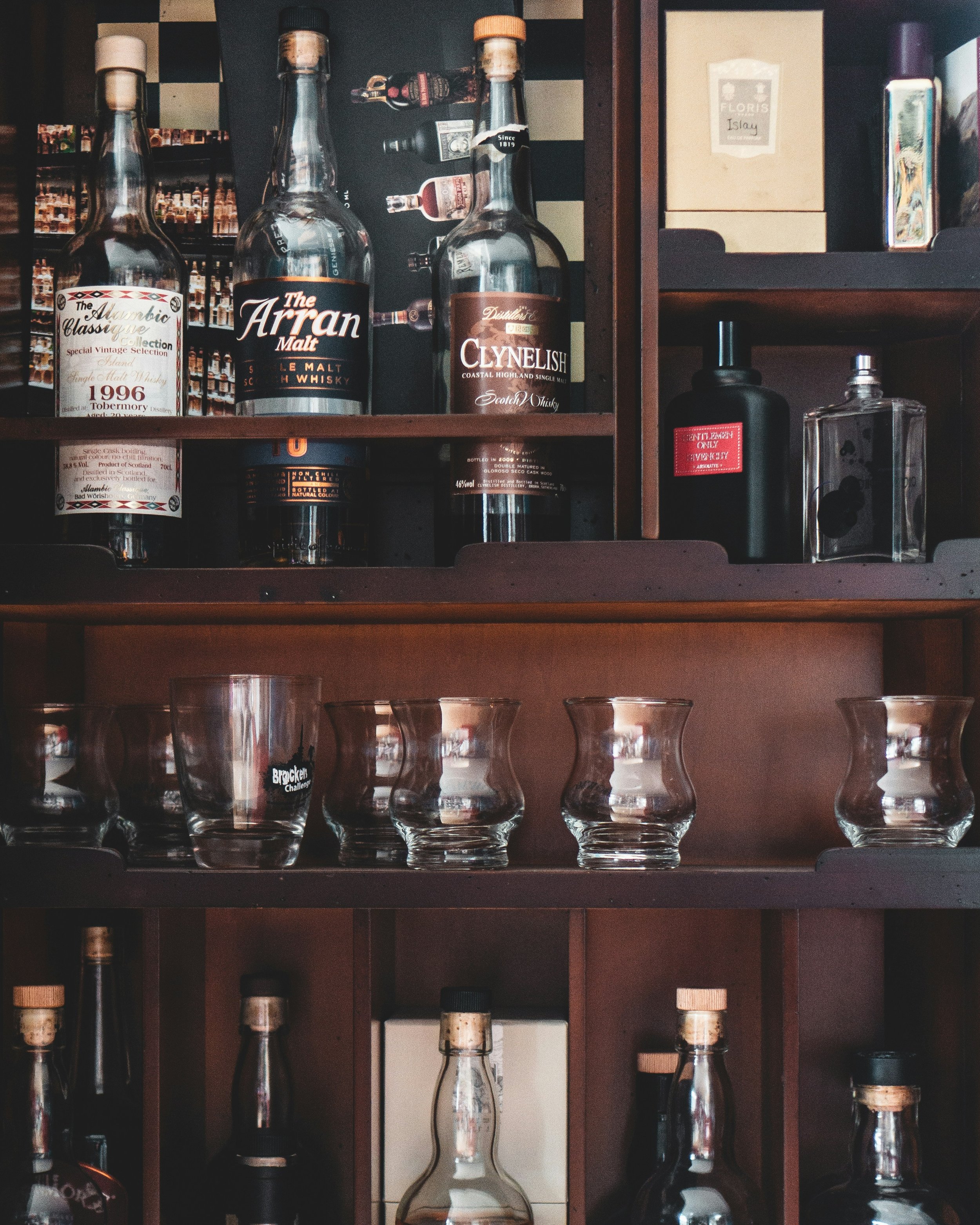A Quick History of Whisky Scotland’s National Drink
If you visit Scotland at any time of year, you will be spoilt for choice of dram (a measurement of whisky). From complete novices to expert collectors, experiencing whisky, or Scotch, in Scotland is an experience for all (over 18) to enjoy.
Scotland is steeped in history, and the national drink is no exception. From its first recorded mention in 1494, by order of the King to Friar John Cor ordering thirteen bolls of malt to make aqua vitae, Latin for water of life, this would be enough for fifteen hundred bottles, suggesting distillation was well established by the 15th century.
In 1823, parliament introduced the Excise Act to licence distilleries making single malt whisky. The first to be granted a licence and thus the oldest legal distillery in Scotland is The Glenlivet Distillery in Moray, which is still in operation today and is the second most sold single malt globally. Second to Glenfiddich, which has been distilled nearby in Dufftown since 1886.
There are so many ways to enjoy the amber nectar in Scotland, from cocktails to sauces, hot toddy drinks to cure a cold, or even with porridge (served here at Haymarket Hotel for breakfast). Whisky really is a way of life.
To sample some of Scotland's finest, make sure you make use of our well-stocked Logan’s Bar during your stay!
The Scots take whisky very seriously. To be classed as authentic Scotch whisky, the following requirements must be met.
1. Whisky must be produced, distilled, matured, and bottled entirely in Scotland. If a cask so much as rolls across the border into England, it’s no longer considered Scotch whisky.
2. Maturing the whisky must be in casks made of oak.
3. Whisky is to be matured for a minimum of three years and one day.
4. Must have a minimum of 40% ABV when bottled.
There are two basic types of Scotch whisky, from which all blends are made: single malt Scotch and single grain Scotch.
Single malt Scotch whisky must have been distilled at one single distillery as a batch process using a pot still distillation process and made from a mash of 100% malted barley and water only. Single malt means that the whisky has not been mixed with any other whisky from another distillery.
Single-grain Scotch whisky is also distilled at a single distillery, but in addition to malted barley and water, other wholegrains or cereals such as rye, corn or wheat have also been added. “Single,” in this instance, refers to the single distillery, so it is not mixed or blended with other whisky, even though multiple grains may have been used.
Blended whisky is born from these two starting points. Blended malt whisky is a blend of single malt whisky from two or more distilleries. Likewise, blended grain Scotch whisky is made from a blend of two or more single-grain Scotch whisky from two or more distilleries. Lastly, blended Scotch whisky is a blend of single malt Scotch whisky with single grain Scotch whisky from two or more distilleries. 90% of whisky production in Scotland is blended Scotch whisky.
There are over 100 distilleries spread across five areas within Scotland that the Scotch Whisky Association recognises as different regions. Each region produces its own distinct and unique flavours, all of which reflect the landscapes and surroundings of that region.
Campbeltown
A small western coastal town which was once home to over 30 distilleries but now only boasts three, so it is now the smallest whisky-producing region. The oldest being Springbank (1828). Characteristics of this region’s whisky are described as grassy, peaty, sweet, smoky, salty/oily or rather unceremoniously described by the National Tourist Board as “flavour of a wet dog or wet wool”. Despite that description, some say this region produces some of the finest malts you’ll find.
Islay
One of the southernmost of the Inner Hebridean Islands located off the west coast of Scotland, Islay is commonly known for two distinct flavours depending on where the distillery is located on the island. Southern distilleries use malt that is heavy with peat and peaty water, which in turn make peaty, full-bodied, robust whisky. Northern distilleries that use spring water are described as producing lighter, sweeter, mossy, or even nutty whisky. Although small, only 25 by 15 miles (40 by 24 kilometres), Islay has nine distilleries and a strong cultural heritage, hosting the Festival of Malt and Music every May and is renowned as a centre for whisky tourism.
Highlands
The largest region by area, these 47 distilleries are located on both the mainland and Islands of Arran, Jura, Mull, Orkney and Skye. Whiskey from the Highlands is described as fruity, sweet, spicy and malty.
Lowlands
From the central belt, Edinburgh, Glasgow and Fife to the lush rolling countryside of The Boarders in southern Scotland, this region is home to 18 distilleries. Described as having soft and smooth characteristics, whiskey from the lowlands has a floral nose and tends to be lighter and sweeter.
Speyside
This breathtaking region takes its name from the river Spey, which provides water to many distilleries, boasts beautiful valleys and secluded glens and produces half of all of Scotland’s whisky in its 52 distilleries. The oldest being Strathisla (1786). Arguably the driest and warmest part of Scotland, this region is ideal for growing barley and produces some of Scotland’s best-loved malt whiskey. Single malts from this area are known for their smoky complexity. The two best-selling single malt whiskies in the world, Glenlivet and Glenfiddich, are both from Speyside.
Don’t forget to step into Logan’s Bar and try our recommended, ever-changing collection of Scotch Whisky and as always, enjoy your stay!









